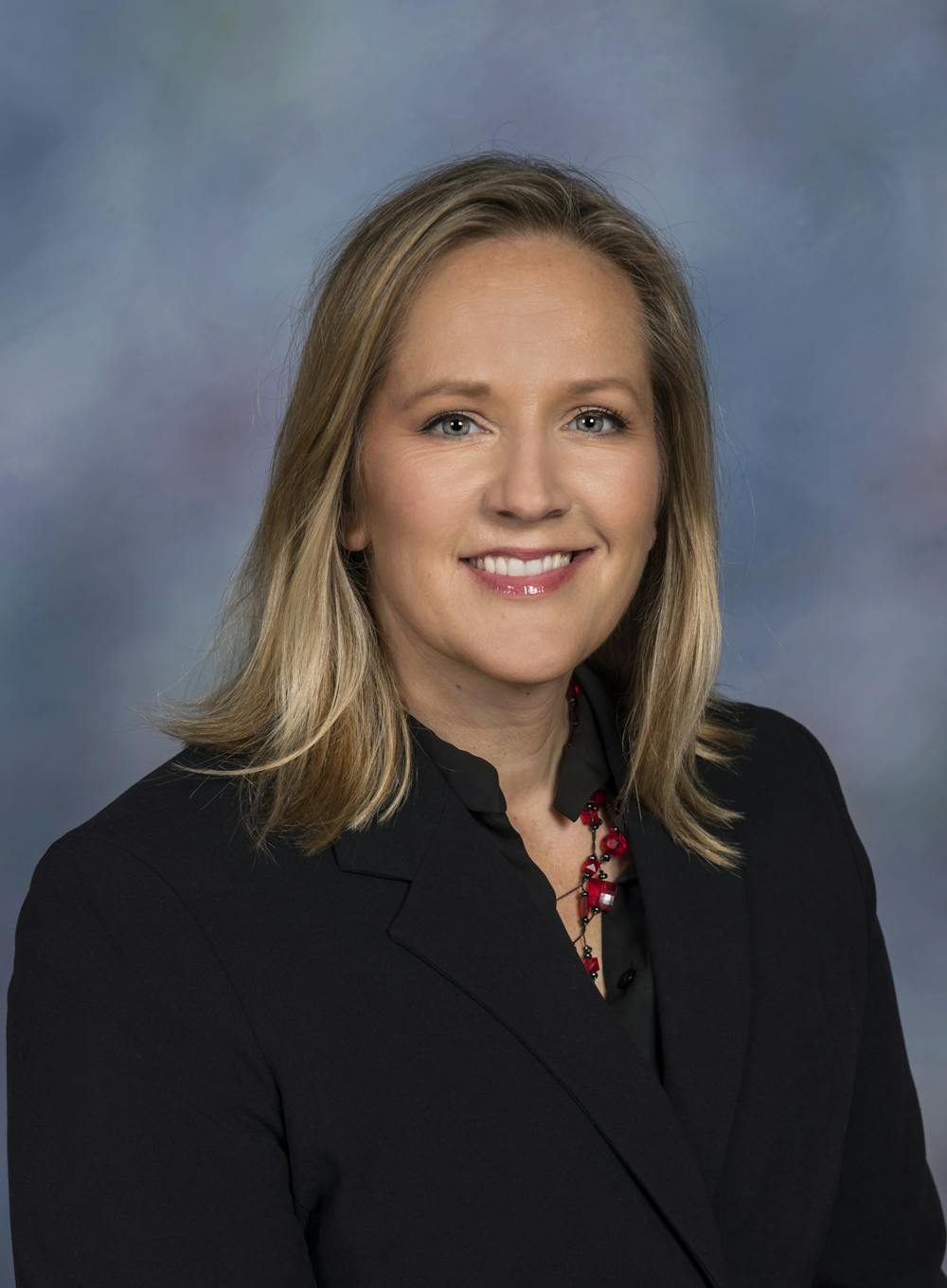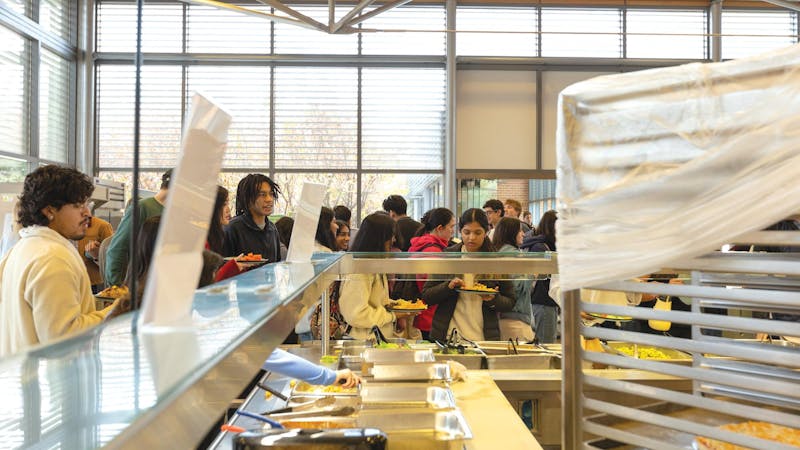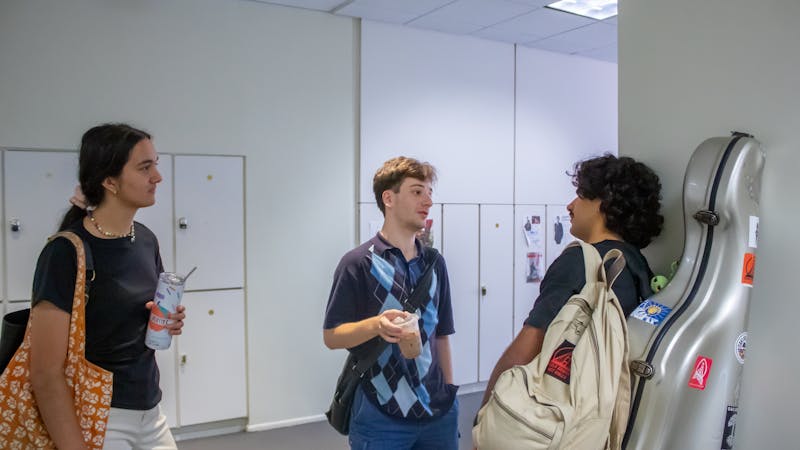The ins and outs of the Crisis Management Team

Throughout the past two years, crisis after crisis hit: the winter storm in February, multiple hurricanes, and of course, the ongoing pandemic. But no matter what the crisis is, one thing stays the same is that the Crisis Management Team takes on the job of getting Rice safely through it. Although the Rice community might be most familiar with their weekly COVID-19 update emails, the CMT has a host of duties to attend to.
Jerusha Kasch, director of institutional crisis management, is the only full time member of the CMT, which does not rely on a permanent roster. Instead, certain Rice employees are assembled as needed when a particular crisis arises, according to Kasch. She said the number of people on the team at any given moment varies; it can reach as many as 60 people.
“On paper they have two full-time jobs,” Kasch said. “We are looking for individuals who can set their regular job aside for a period of time and work for the crisis management team.”
However, COVID-19 has forced many members of the CMT to put in 80-hour weeks as they juggle their regular job with the university’s response to the pandemic, according to Kevin Kirby, chair of the Crisis Management Advisory Committee. He said that they do not receive extra pay for their work on the CMT. Kasch also said that the extended nature of COVID-19 has caused many members of the CMT to put in extra hours.
“I would say COVID is a little unique in that it’s really hard to set your regular job aside for an entire two-year process, so we have had many people working a long time to manage their job as well as their primary responsibility responding with the crisis management team,” Kasch said.
Kasch said that as a certified emergency manager, she takes charge in times of crises and manages the operations of the CMT.
“The process is we set objectives for a two week period of time and we attempt to accomplish those objectives, and then we reassess, reevaluate and reset objectives,” Kasch said.
The CMT employs a standardized approach to all crises, according to Kasch.
“There was a day in emergency management when we would have a pandemic flu plan and a hurricane plan and a snakes-on-plane plan but now we don’t,” Kasch said. “We use the National Incident Management System on our campus, a management structure and system by which we approach all hazards and incidents.”
Kash said that this framework optimizes the CMT’s responses to incidents.
“We communicate in the same way and organize in the same way and we practice that way so that we are fluent in the language and the process when an incident comes,” Kasch said. “We don’t have to stop and learn it.”
However, Kasch and the CMT are not the ones who decide how Rice will tackle any given crisis. That duty is left to the CMAC, according to Kirby.
“There’s an advisory committee that makes policy decisions,” Kirby said. “I chair that and it has [people] like the general counsel, the provosts, the president, the vice president of public affairs, the vice provost [for] research — there’s a bunch of people on it.”
Kirby said that the CMAC operates by debating policy options and then deciding which tools to best employ given the circumstances.
“Everyone has different expertise,” Kirby said. “We debate [how to react to a crisis] and we almost all come to the same conclusion. When you have enough information and enough people who understand what they’re doing, you come to the right set of decisions.”
As a certified emergency manager and leader of the CMT, Kasch translates the decisions made by the CMAC into actionable operations.
“I am not a member of [the CMAC] but I attend the meetings because I am a conduit between the operational folks,” Kasch said. “My job is to provide a situational assessment on what’s happening and what are the problems we are seeing and what are the answers we are looking for. There is a link between the two teams.”
Kasch joined Rice in 2017, six months before Hurricane Harvey hit the Houston area. Before coming to Rice, she worked as a law enforcement officer, in emergency medical services and in hospital systems. She specialized in emergency management for public health outbreaks of illness and generalized emergencies for government entities. Kasch said that she has enjoyed the transition to emergency management in higher education.
“Higher ed is generally new to emergency management,” Kasch said. “It was an opportunity for me to bring my knowledge and experience into an area that really needs some emergency management guidance.”
At first, Rice’s particular approach to crisis management was off-putting, according to Kasch.
“Kevin [Kirby] warned me that Rice has this unique, very networked way by which things get done quite organically,” Kasch said. “Coming from a very structured environment it was almost painful for me to watch that process, but everything got done. Everything was managed and everything was taken care of.”
Kasch said that as she has grown into her position she has begun to improve Rice’s approaches to crises.
“[Handling the pandemic] allowed me to see how Rice operated with this informal network and attempt to formalize that to tighten it up a little bit,” Kasch said. “[We’ve been] able to take these informal ways of getting things done and set just enough formality to help the process become expedient and transparent.”
Kirby said that he is happy with Rice’s improvement at managing crises over the years.
“Like everything in life you want to keep getting a little bit better every month and every year and then over a long period of time, you are dramatically in a better place,” Kirby said. “That’s the process for us over the last half-dozen years. We have much better ways of organizing ourselves; we have better tools; we have people who are better trained.”
According to Kasch, the CMT may now be one of the best incident management teams in the state of Texas.
“I work with them and I have trained them and our team has become extremely efficient [in] how they operate because of how we have approached this COVID process,” Kasch said.
Kasch said that she is amazed by the amount of effort the members of the CMT are willing to put in to help the Rice community.
“What I think is unique about Rice and what I really love about Rice is that there is no one person that is pointed at and told, ‘You will be on the crisis management team,’” Kasch said. “I work with a team of people who will not go to bed at night if there is work to be done. If there are students on the campus the number one goal is that they are cared for and that they are educated. People will go above and beyond to make sure that happens.”
More from The Rice Thresher

Over 1,000 students petition against new meal plan
When Konstantin Savvon opened the Housing and Dining email announcing the new unlimited meal plan, he was instantly concerned about the impact on off-campus students like himself.

Rice shuttle bus drivers reflect on changes and connections behind the wheel
Martine Stewart has spent the past year behind the wheel of Rice’s greater loop shuttle, circling the inner campus from the early morning to late afternoon. She said she has come to recognize many of her regular riders – not just their faces, but the exact spots where they wait to be picked up.

Music majors at Rice’s Shepherd School tackle busy schedules, future goals
Cirdan Vonnahme began playing the cello at 4 years old. After winning his first competition at 11 and debuting with an orchestra, he realized he wouldn’t mind playing the cello for life.

Please note All comments are eligible for publication by The Rice Thresher.